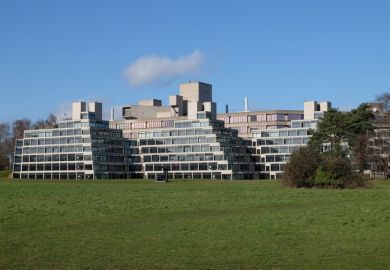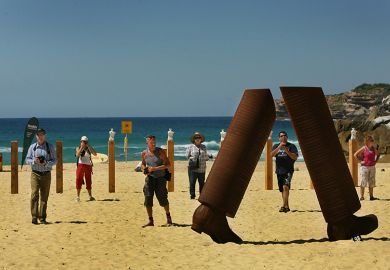A University of Oxford college that has been forced to operate largely from temporary accommodation for nearly a year has unveiled extensive plans to remove reinforced autoclaved aerated concrete (Raac) from its buildings as it counts the cost of a crisis that has fallen out of the spotlight.
Inspections of the Grade I-listed St Catherine’s College, built in the early 1960s, revealed extensive use of the material, some of which was deemed by experts to be “critically dangerous”.
Buildings including the dining hall, the junior and senior common rooms and the Wolfson Library have been closed since the start of the academic year, and temporary supports have been installed in an accommodation block to ensure that it can continue to be used.
“This obviously comes at a great cost,” the college says in a planning application submitted to Oxford City Council that details the scale of the challenge facing the institution.
All of the roofs of the buildings in question have been found to be made from Raac and must be replaced, the document says.
“Multiple defects” including “cracking, water staining, and physical damage” necessitated the need to act, it adds. The college says all options for retaining the Raac would have caused “serious harm to the building in one way or another”, so it was decided to remove the material.
However, the replacement material has to be similar in weight and depth to the Raac, which is unusually lightweight and shallow. The college is proceeding with a metal option, with the disruptive works also requiring the removal of a kitchen and the replacement of large glass panels.
St Catherine’s has not announced the final cost of the project, but it said it would soon launch a “major capital campaign” to help pay for it. If it is granted planning permission, the college hopes to begin the work in August.
Several universities were forced to examine their estates for the presence of Raac in September 2023, following government warnings that shut many schools.
While most campuses were deemed safe, the University of East Anglia was also badly affected, recently announcing that it had spent £2 million on remedial work and had had to rehouse 750 students when Raac was found in accommodation blocks.
Three sites were due to reopen in September, but the future of the buildings known as “Ziggurats”, which have 600 rooms, remained uncertain, with the university potentially having to remove Raac from 75 roofs, the BBC reported.
Register to continue
Why register?
- Registration is free and only takes a moment
- Once registered, you can read 3 articles a month
- Sign up for our newsletter
Subscribe
Or subscribe for unlimited access to:
- Unlimited access to news, views, insights & reviews
- Digital editions
- Digital access to THE’s university and college rankings analysis
Already registered or a current subscriber? Login








